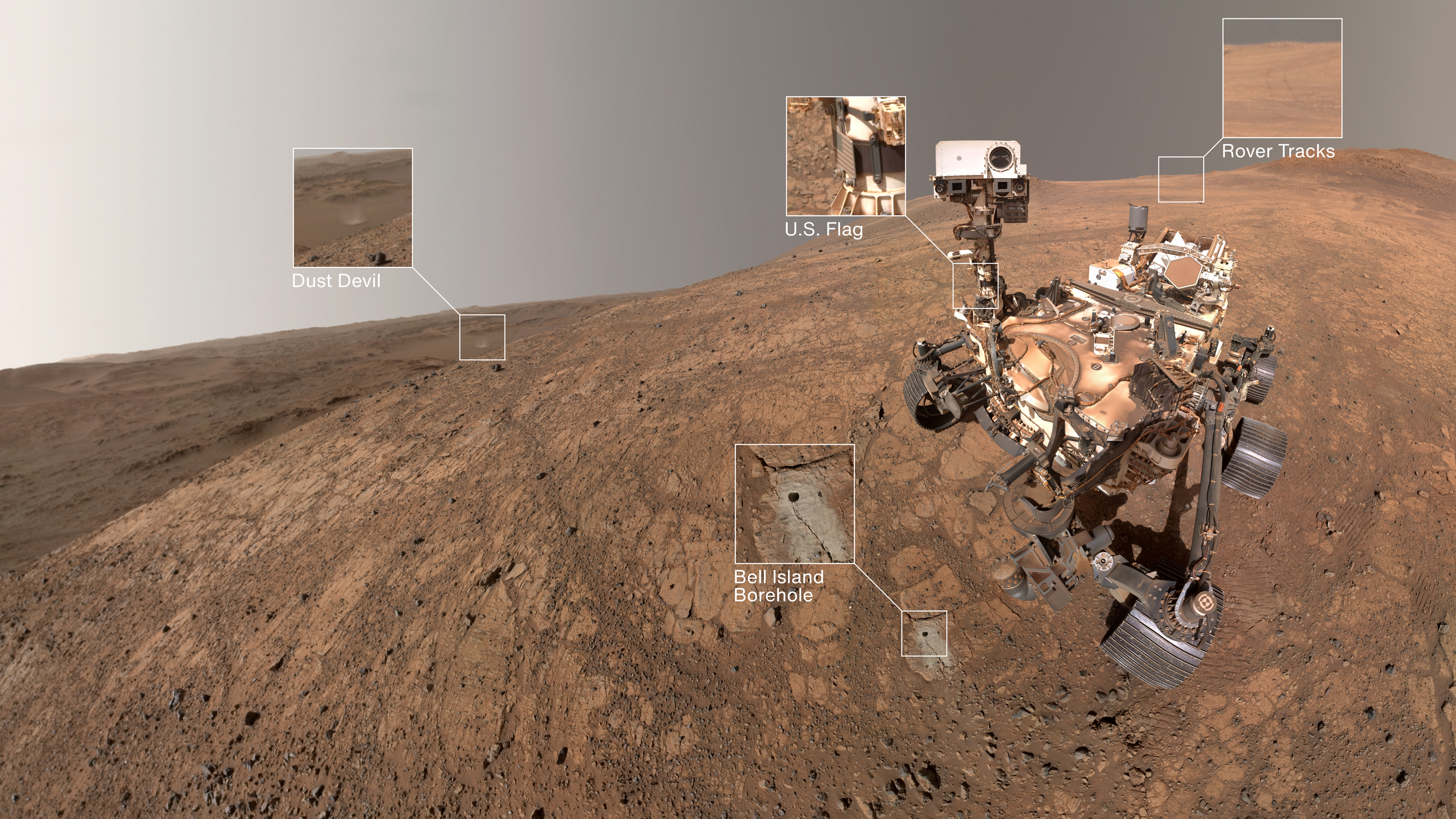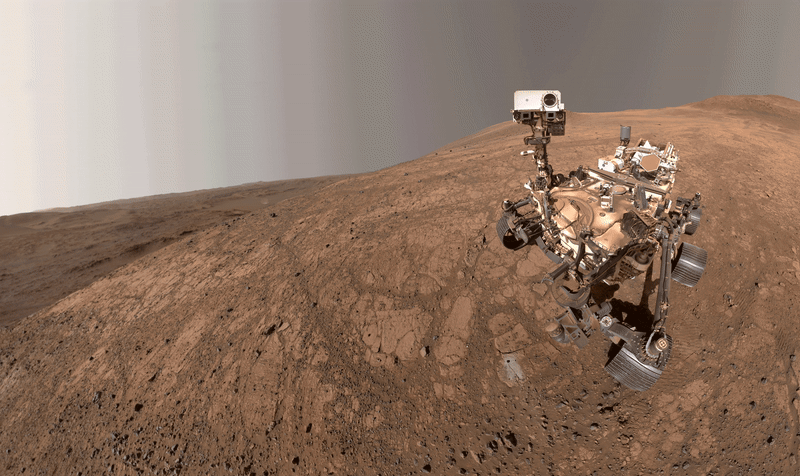NASA’s Perseverance is a phenomenal robot that has captured some stunning views of Mars, at least during the day. It’s not designed for night-time ogling despite the recent incredible observations of aurorae on Mars. Still, working at the very limit of the camera tech, the rover team has captured a rare moonlit night scape on the Red Planet, with a special guest star in the sky.
The photo was captured at 4:27 am local time on March 1, 2025, the 1,433rd Martian day, or sol, of Perseverance being on Mars. To take this image, the team has to use the longest possible exposure on the rover’s left navigation camera, which is 3.28 seconds. Still, they took 16 images and then stacked them together in a single 52-second exposure.
Visible in the sky is Deimos, the smaller of Mars’s two moons. The terrain is hazy but that is an artifact of the multiple exposures. The sky also looks strange; several dots are present beyond the bright, potato-shaped moon. Only two are actual stars, Regulus and Algieba, in the constellation of Leo. The rest are either noise or cosmic rays hitting the camera, which is more common than you’d think, as you can see here on Curiosity’s camera during the massive solar storm last year.
This beautiful image is one of a few well-planned snaps from the rover released recently. Another is Percy’s latest selfie, it’s fifth ever, marking the rover’s 1,500th sol on Mars, which has a surprising photobomber in the background.

Percy’s fifth selfie, captioned.
Image Credit: NASA/JPL-Caltech
Drilled gray rocky material can be seen just under the rover in the picture, part of the exploration of the area dubbed Witch Hazel Hill, on the rim of Jezero Crater. The selfie is stitched together from 59 images, with an extra three used in the animated version of the rover looking down at the bore hole that you can see below. But far in the background, there is something else. A dust devil!
“The rover self-portrait at the Witch Hazel Hill area gives us a great view of the terrain and the rover hardware,” Justin Maki, Perseverance imaging lead at NASA’s Jet Propulsion Laboratory, said in a statement. “The well-illuminated scene and relatively clear atmosphere allowed us to capture a dust devil located 3 miles to the north in Neretva Vallis.”

Looking very proud of the science.
Image Credit: NASA/JPL-Caltech
In its over 4 years on Mars, Perseverance has traveled for over 36 kilometers (22 miles) and collected 26 rock cores. However, NASA’s Mars Sample Return mission is looking likely canceled so it may be a while yet before we get to study these precious samples.
Source Link: Rare Moonlit Night On Mars Captured By Perseverance